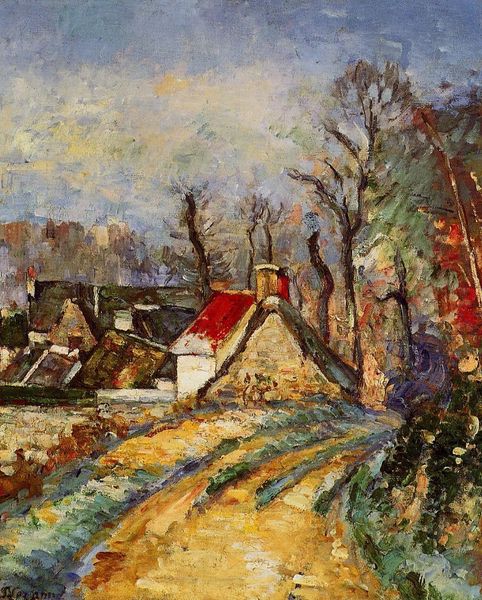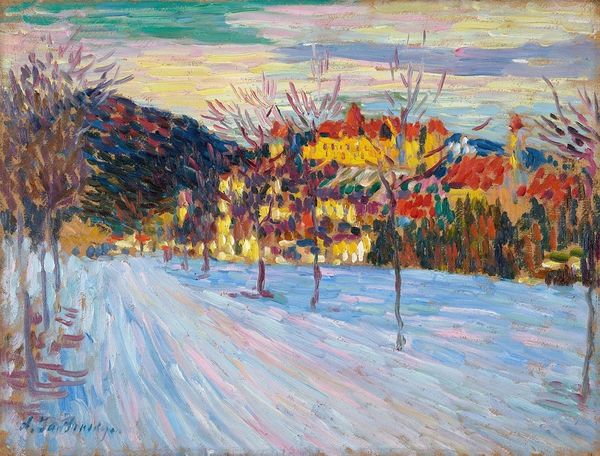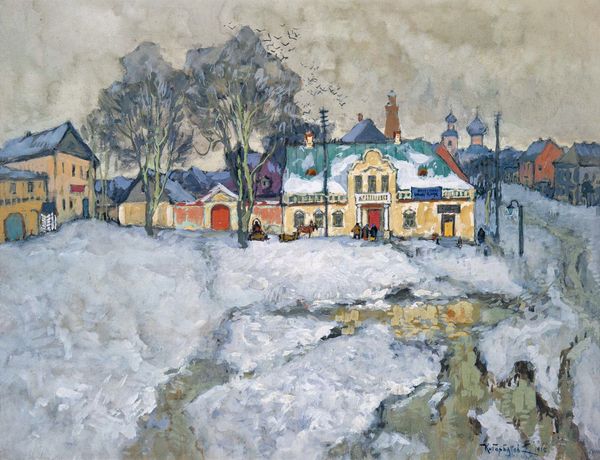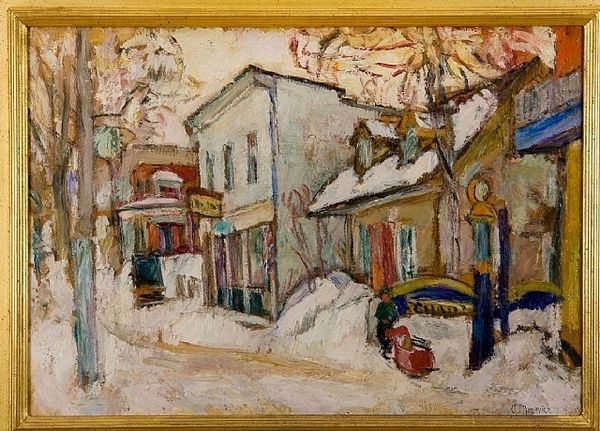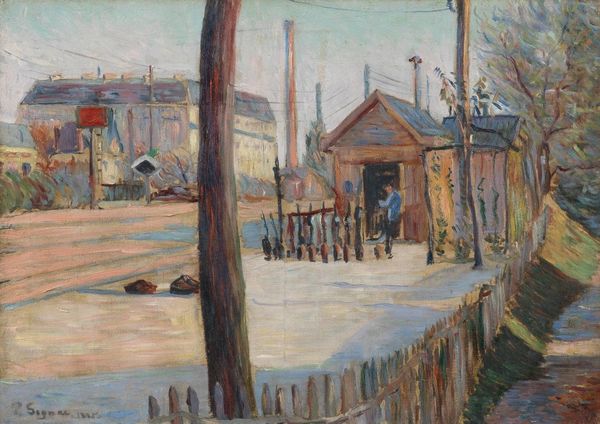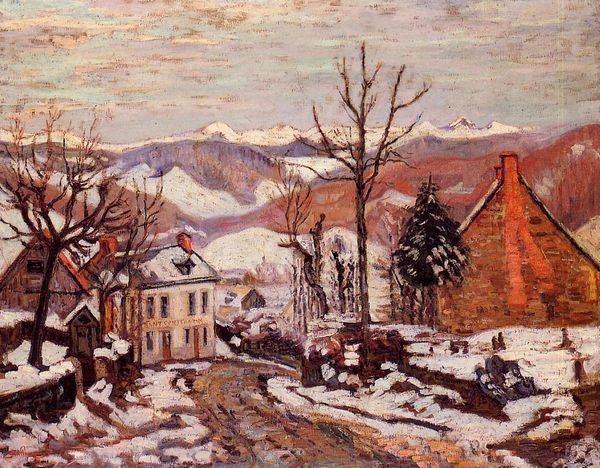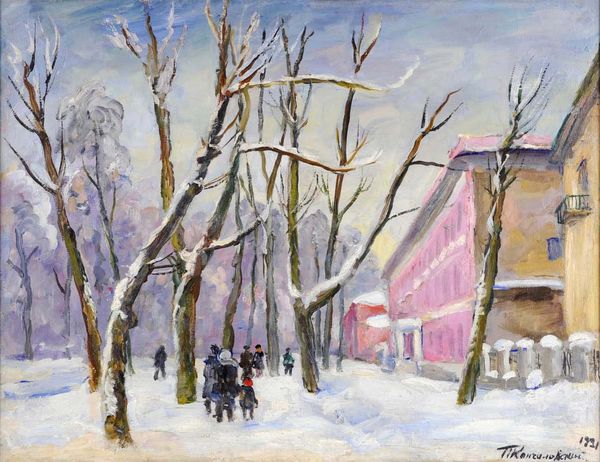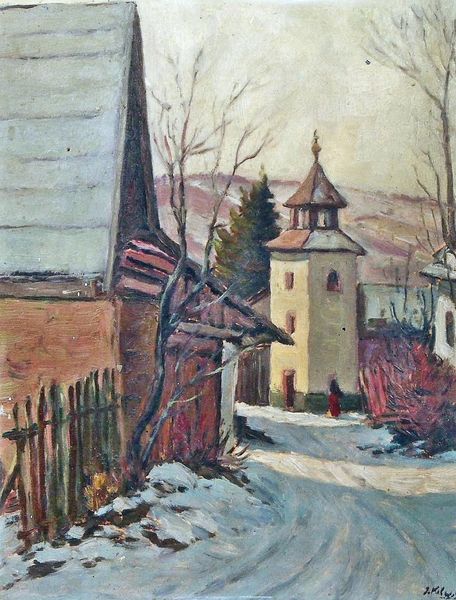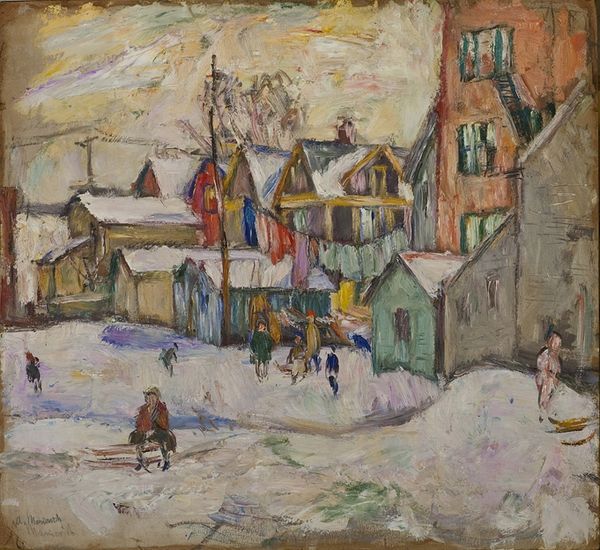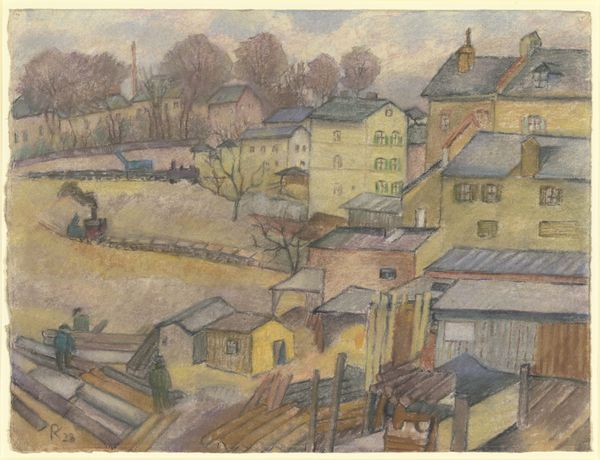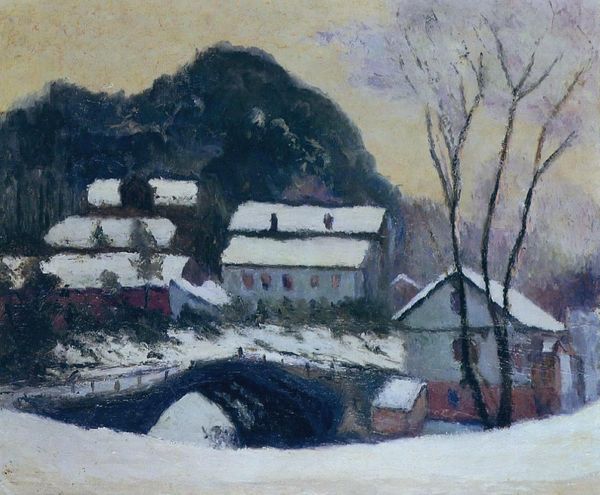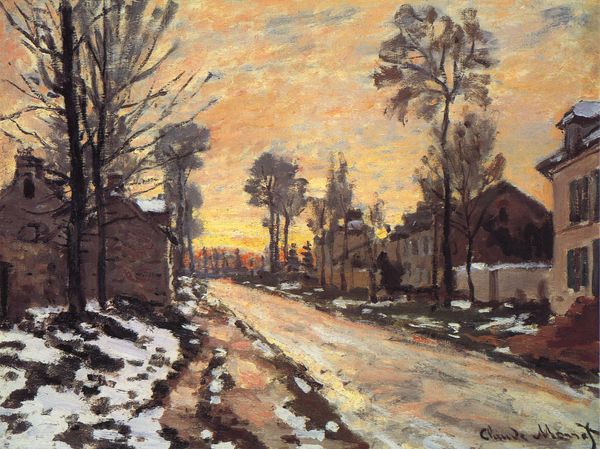
plein-air, oil-paint
#
narrative-art
#
impressionism
#
plein-air
#
oil-paint
#
landscape
#
impressionist landscape
#
cityscape
#
painting art
Copyright: Public domain
Curator: What a disquieting scene! I immediately feel this somberness through the muted colors. Everything feels very transient. Editor: Yes, there is an undeniable moodiness to it, a kind of industrial melancholy. We're looking at "A Street in the Bronx," an oil painting by Abraham Manievich, known for his impressionistic style, and seemingly done en plein-air. It is, in effect, a landscape. Curator: Interesting that you use the word landscape, because what jumps out at me are these leafless trees. They strike me as symbolic, a representation of seasonal loss and the stillness of winter or perhaps an autumn wasteland in a bustling borough. It recalls earlier landscape painters working to depict the cycle of nature. Editor: Perhaps, but I’m drawn more to what’s human-made, which speaks more about our society: the buildings, the trolley. These elements speak volumes about urbanization and the lived experience in a rapidly evolving city. I find myself wondering who lived in those buildings, rode that trolley? What were their stories? Were they as transient as these starkly depicted trees? Curator: See, I am fascinated by those skeletal branches! The bare tree as an image is incredibly powerful. They reach upward, yes, toward the sky, toward heaven even, but also function as conduits or connectors between the terrestrial world and a celestial sphere, hinting at something larger than the urban landscape. This streetscape seems more to evoke introspection, the way Caspar David Friedrich might use nature to create sublime metaphors of human existence. Editor: But Manievich positions this street scene in The Bronx. What about the narratives inherent to this particular place? This borough’s history with immigration, socioeconomic stratification, public transportation struggles. The trolley in particular— what kind of access did it provide to whom, and who did it leave behind? We can’t just bypass social and political history when the landscape includes such loaded iconography. Curator: You offer an important and vital way to view the painting in its cultural context! Still, I keep going back to the basic human longing it presents – for connection to something spiritual. I keep considering the deeper meaning these elements carry through time and collective consciousness. Editor: I see what you mean. And considering The Bronx specifically, a space where the tension between urban decay and communal hope plays out, the image resonates with layered and symbolic complexities that prompt a variety of readings.
Comments
No comments
Be the first to comment and join the conversation on the ultimate creative platform.
